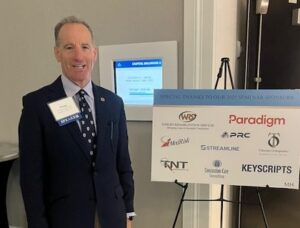
How is Artificial Intelligence Changing Workers’ Compensation Claims?
With insurance adjusters, risk managers and third party administrators (“TPAs”) continuing the trend to outsource aspects of their claims handling, it’s no surprise that with the advent of “Artificial Intelligence,” there would be the use of “non-human” assistance with their case load. With hundreds of files assigned to each workers comp adjuster, it’s no surprise that technology would be available to supposedly lighten the insurance company adjuster’s load.
Artificial intelligence (AI) is becoming a major player in both everyday life and in industries we might not normally associate with technology, including workers’ compensation claims initiation and management. Workers Comp Insurance companies, TPAs and self insured employers are beginning to use AI tools to: analyze claims, review medical records, and even predict case outcomes. These changes are already reshaping how injured workers interact with the claims process, and it’s worth understanding both the benefits and the potential risks.
1. Faster Claims Processing

One of the main advantages insurers see in AI is efficiency. Large amounts of paperwork, adjuster notes, and medical documentation can be processed in seconds by an AI system. Likewise, calls can be recorded, transcribed, summarized, organized and cross-checked. This can speed up initial claim reviews and help insurers identify patterns, such as common types of workplace injuries in specific industries. In theory, this should mean injured workers get decisions faster. It can also identify inconsistencies, especially between the recorded statements, the initial reports from the employer and the medical histories.
2. Data-Driven Risk Assessments
AI tools can also detect trends across thousands of claims at once. For example, they may highlight job sites or roles with unusually high injury rates. This data can help employers improve safety measures, and also allows insurers to better estimate risk exposures, charge premiums and/or make recommendations nations to their insureds, agents and other stake holders.
3. Potential for Errors and Bias

Vendors are promoting AI as the answer to almost every question, issue, task and system. Despite its promise, AI isn’t perfect. These systems are only as good as the data they’re trained on. For example, if medical records are incomplete or if accident reports are vague, the AI’s conclusions can be flawed. For injured workers, this could mean claims are flagged incorrectly, payments are delayed, or the severity of injuries is underestimated.
4. Transparency and Accountability Concerns
Another challenge is transparency. If an AI tool influences a claim, it can be difficult to trace exactly how that decision was reached. This raises important questions about accountability: should responsibility lie with the adjuster, the insurer, or the algorithm itself?
5. The Role of Human Oversight

Most experts agree that AI should not replace human judgment but rather assist it. Attorneys, claims adjusters, and medical professionals still play the most critical role in interpreting the context behind injuries and ensuring fairness. Technology may streamline processes, but people remain central to advocating for the rights of injured workers. There have been several high-profile instances of law firms relying on AI to write briefs, pleadings Motions & other papers for court that ruined out to have citations that did not exist! The AI tool has used “hallucinated citations,” causing consternation in the courts, embarrassment for the firms that did not check the papers before filing with the courts and wasting the time of the firms & litigants not the other side. Herndon Workers Comp lawyer Doug Landau has taught at continuing education programs and specially advocated for sanctions against firms that use AI generated papers without human oversight. Submitting “hallucinated citations” deserves to be subject to having to pay the other side’s attorney fees for the time wasted, and a sanction payable to the court. At ABRAMS LANDAU, Ltd., we do not offshore our work. We use real people, real staff, and actually write our own pleadings, educational materials, peer-reviewed published papers and speeches. As one can easily tell from our building, individualized care and the photos on our sites, we believe very strongly in “home made!”
What This Means for Workers and Families
For individuals navigating a workers’ comp claim, these developments are important to watch. On one hand, AI could lead to faster resolutions and even safer workplaces over time. On the other, mistakes in data interpretation or lack of oversight could make it harder for some workers to get the timely benefits they (and their families) need. As AI tools become more common, staying informed about how they are used, and how they may affect claim decision, will be essential. The future of workers’ compensation is not just about new technologies, but about ensuring those technologies serve the people they are meant to protect.
If you, or someone you care about, is seeking medical benefits and financial compensation as the result of a workplace injury, don’t wait. Lawyer Doug Landau and the team at ABRAMS LANDAU, Ltd. are committed to advocating for those injured and ensuring they receive the timely care and compensation they need. Contact us today to get experienced legal help in personal injury and workers’ compensation cases at frontdesk@landaulawshop.com or call/text us at (703) 796-9555.
